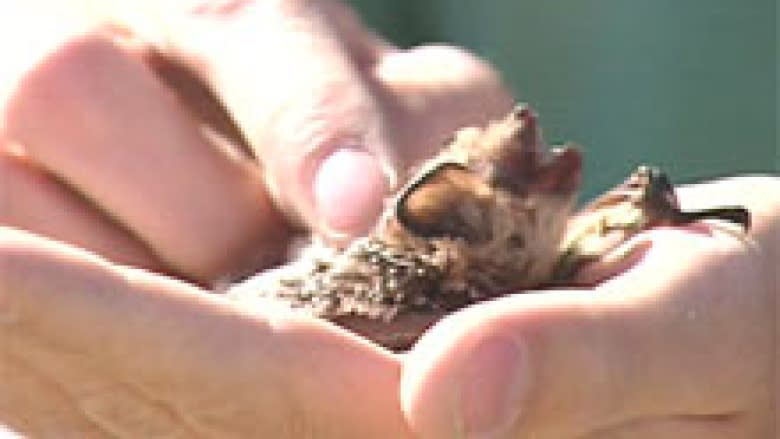Canada, U.S. and Mexico sign deal to protect migratory bats
Canada has signed an agreement with the United States and Mexico to protect migratory bats.
In the letter of intent, the three countries agreed to improve co-operation and planning to support bat conservation across North America.
Several species of the mammal are considered threatened or endangered in one or more of the countries.
The problems include the loss of migration habitats, wind turbines and disease such as white-nose syndrome.
Bats aren't the only species the three countries have agreed to work together to protect.
A similar agreement was signed a year ago to help save the monarch butterfly, which is listed as a species of "special concern" under Canada's Species At Risk Act.
The federal environment minister Leona Aglukkaq says this is the best way to protect species that summer in Canada, travel through the United States, and winter in Mexico.
"Wildlife sees no passports, and wildlife sees no borders. So how we deal with species at risk has to be thinking outside the box," she told CBC in a recent interview.
"If you put the species first, this is the approach to take," she added.
There's also work on migratory birds and how to extend banding programs now in Canada and the U.S into Mexico.
Funding required for follow-through
The environmental group Nature Canada is supportive of the continental approach, particularly for the monarch butterfly.
Executive director Eleanor Fast wrote a letter to Aglukkaq in January asking her to back up the commitments with cash.
"It's very important to commit in these letters of intent to conserving these species, but actually making it happen does take a commitment of funding," Fast said.
She points to the U.S., which committed $3.9 million to conserve monarch habitats and expand national milkweed planting progams. The plant is essential for the monarch to lay eggs and reproduce.
There was more money for species at risk in this week's federal budget: $75 million over five years.
But the director of conservation for Nature Canada, Stephen Hazell, says this is a renewal of existing funding, not new money.
"Is it enough? Almost certainly not. The demands on that fairly small pot of money are increasing," Hazell said.
Nature Canada says that while Canada has prepared a draft management plan for the monarch butterfly, there is no specific money set designated to protect their habitat in Canada.
But the minister's office says it has spent more than $15 million on a number of projects to protect the butterfly.
It also added Long Point National Wildlife Area and Point Pelee National Park to the "Sister Protected Areas" Network, established by the three countries in 2005 to better protect the monarch butterfly.



